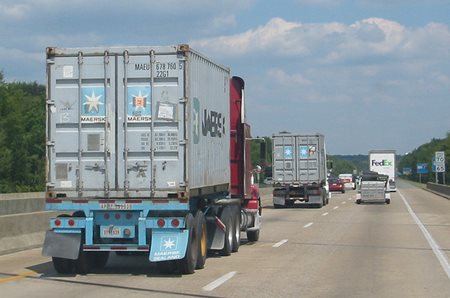Supply and demand is the backbone of any market economy. You’ve probably heard the term in the news or maybe you learned about it in your high school economics class. It’s an important term to understand as it affects your life as an owner-operator. Demand refers to how much of a product or service is desired by buyers. Supply refers to how much the market can offer. The price of a product or service is the result of supply and demand.
Let’s look at a trucking industry example. You’re in Ohio with two other truckers. A couple of businesses have five loads each that need to be shipped to Washington. There is an excess of loads (demand) with a limited number of trucks (supply) thus the price of a load goes up. Alternatively, let’s say that there are 10 trucks with only three loads. Now the supply of trucks is high and the demand is low for loads that need transport. The price is low because there are too many trucks willing to take the limited number of loads. Drivers will accept a lower rate in order to get work. Supply and demand in the trucking industry is often driven by the density of population centers where people need goods shipped into them, and also by the density of manufacturing and products being shipped out of an area.

Market areas across the United States are different and in order for a percentage paid contract driver to be successful, he has to work effectively with the differences. It’s helpful to remember that it is always the marketplace that decides the rate for a freight load. You’ll have a hard time trying to change that so you need to figure out how to make a profit from changing marketplace prices.
Also Read:
A Shortage is Good When You Have The SupplySupply and demand are the primary forces driving the differences in pricing between one area and another. It’s common to see a percentage paid contract driver receiving $2.50 per mile, also known as a headhaul rate, for hauling a load from Chicago to Philadelphia and then immediately turning around with the same freight heading back west from Philadelphia to Chicago for $1.20 per mile, known as a backhaul rate. The higher price in Chicago tells you there are consistently fewer trucks and more loads in Chicago and the lower price in Philadelphia tells you that there are more trucks available and fewer loads.
Hauling headhaul and backhaul is a balancing act. When leaving a headhaul area with a load and going into a backhaul area, the price has to pay enough going there to make up for the low price of the backhaul. Think of it this way; the headhaul is subsidizing the backhaul. When leaving a backhaul market, you can’t afford to be super picky or you’ll force a layover on yourself that will cost you more money in the end. When hauling headhaul and backhaul loads it is important to always remember to manage the average of the backhaul/headhaul revenue instead of each load individually. In the example above the average price between Philadelphia and Chicago is $1.85 per mile, which isn’t bad.
Backhaul market areas in the United States are like magnets for inbound loads, but can be slow for outbound loads. Areas like this include Colorado, Massachusetts, Maine, North Dakota, Utah, and Wyoming. When you take a load into these states you should remember not to be too picky about what you haul out of these states. Try to avoid layovers whenever possible to save money. The guiding principle is, get out of there as fast as you can – preferably to a headhaul market area.
Also Read:
Getting the Best Freight Rates
You don’t have to be an economics major to understand the basic principles of supply and demand. However, understanding and identifying specific markets can be confusing. Don’t be afraid to ask questions. Often times experienced operations staff or sales staff are more than willing to spend a few minutes chatting about markets as you’re the one paying their salaries. Key words to pay attention to include: power lanes, hot-spots, and headhaul and backhaul. By spending a little time learning and understanding the market areas in the country can help you come out in the black instead of the red.
Safe travels!
Image Source - https://www.flickr.com/photos/87913776@N00/